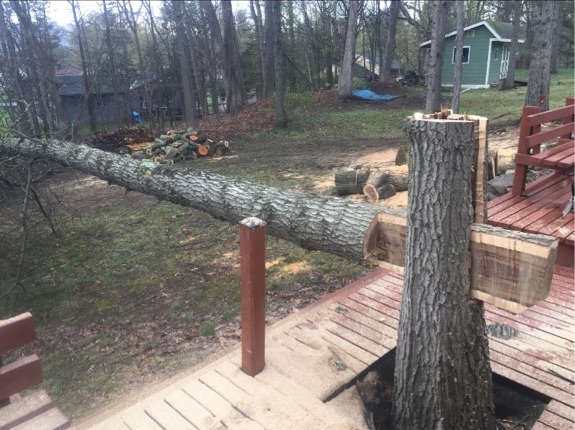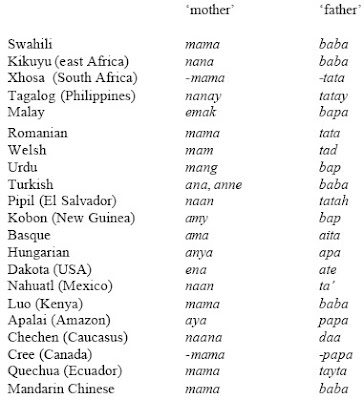The
Solutrean hypothesis:
The Solutrean hypothesis is a controversial proposal that peoples from Europe may have been among the earliest settlers in the Americas, as evidenced by similarities in stone tool technology of the Solutrean culture from prehistoric Europe to that of the later Clovis tool-making culture found in the Americas. It was first proposed in 1998. Its key proponents include Dennis Stanford, of the Smithsonian Institution, and Bruce Bradley, of the University of Exeter.
In this hypothesis, people associated with the Solutrean culture migrated from Ice Age Europe to North America, bringing their methods of making stone tools with them and providing the basis for later Clovis technology found throughout North America. The hypothesis rests upon particular similarities in Solutrean and Clovis technology that have no known counterparts in Eastern Asia, Siberia or Beringia, areas from which or through which early Americans are known to have migrated.
TYWKIWDBI had three posts on pre-Clovis finds last year, discussing skulls found in a
Yucatan underwater cave, paleo-era tools on California's
Channel Islands, and a pre-Clovis point found in a
mastodon bone.
Today the
Washington Post and
The Independent have articles about new findings on the Atlantic coast of North America that support the Solutrean hypothesis.
At the core of Stanford’s case are stone tools recovered from five mid-Atlantic sites. Two sites lie on Chesapeake Bay islands, suggesting that the Solutreans settled Delmarva early on. Smithsonian research associate Darrin Lowery found blades, anvils and other tools found stuck in soil at least 20,000 years old [note only the soil can be reliably dated, not the artifacts themselves]...
Further, the Eastern Shore blades strongly resemble those found at dozens of Solutrean sites from the Stone Age in Spain and France, Stanford says. “We can match each one of 18 styles up to the sites in Europe.”..
Stone tools recovered from two other mid-Atlantic sites — Cactus Hills, Va., 45 miles south of Richmond, and Meadowcroft Rockshelter, in southern Pennsylvania — date to at least 16,000 years ago. Those tools, too, strongly resemble blades found in Europe...
“The reason people don’t like the Solutrean idea is the ocean,” he said. No Solutrean boats have been found. But given that people arrived in Australia some 60,000 years ago — and they didn’t walk there — wood-frame and seal-skin boats were clearly possible, Stanford argues...
One major problem facing investigators is that early peoples would have lived on the coast next to the ocean - but sea levels have risen so far since that time that the original coast is perhaps 50 miles off the current shoreline and deep underwater. Caves and artifacts from those locations are difficult to find.
Addendum: I've updated this post (originally published in 2012) to add some items I've recently encountered - first, from Germany's
Der Spiegel, reporting on DNA studies of North Americans:
Now a team of scientists led by the Danish geneticist Eske Willerslev
has analyzed the boy's [Clovis-era, found in Montana] origins and discovered that he descends from a
Siberian tribe with roots tracing back to Europe. Some of the boy's
ancestors are likely even to have lived in present-day Germany.
Their findings go even further: More than 80 percent of all native
peoples in the Americas -- from the Alaska's Aleuts to the Maya of
Yucatan to the Aymaras along the Andes -- are descended from Montana
boy's lineage.
Last week, the scientists published the results of sequencing the child's DNA in the scientific journal Nature.
Late last year, the same team published the decoded genome of another
early human: A juvenile buried near Lake Baikal in Siberia some 24,000
years ago. Their genomes showed surprising ancestral similarities.
This earned Willerslev's team an astounding publishing achievement in
just 100 days: The decoding of the genomes of the oldest analyzed
members of homo sapiens in both the Old and the New Worlds. This has
allowed them to reconstruct the settlement of the Americas via the
Beringia land bridge during the ice ages -- when what is now the Bering
Strait between Russia and Alaska was frozen over -- in greater detail
than ever before.
That report is
discussed in a Reddit thread and summarized on the
Wikipedia page, and at
USA Today:
When researchers analyzed the Anzick child's DNA and compared it to
the genomes of living Native Americans, they found that the boy's family
members were the ancestors of multiple Central and South American
groups, such as the Maya of Central America and the Karitiana people of
Brazil. Willerslev estimates that roughly 80% of Native Americans are
descended from the Anzick group, contradicting claims by other scholars
that the Clovis people didn't leave much of a genetic legacy...
The results overturn the idea that migrants
who colonized the Americas after the Clovis people are the true
ancestors to Native Americans. And the discovery "puts the final nail in
the coffin" for the idea that the ancestors of Native Americans may
have crossed to the New World from Europe, says study author Ripan Malhi
of the University of Illinois at Urbana-Champaign.
With the
genetic data, the researchers can construct a rough narrative of the
peopling of the New World. From Siberia, ancient people gradually
crossed a now-vanished land bridge to Alaska. Some drifted south, giving
rise to the Clovis people and colonizing the United States and Central
and South America. Others stayed in the north and founded the lineage
leading to the modern-day Cree and Athabascan peoples of northern North
America. The study is published in this week's Nature.
I have accordingly inserted "/denies" after "supports" in the post's title.
Addendum: Reposted again, in part because this post has become one of the most-commented posts I've ever created for TYWKIWDBI, and I'd like to have the current generation of readers be aware of it. Mostly I wanted to add this infomation from a recent comment:
Just returned from a visit with Dr. Al Goodyear and his folks at "The
Topper Site" in South Carolina. Documented, dated by the best available
science, Pre-Clovis artifacts found at a Chert quarry have been robustly
tested and are found to be 50,000 years old +. In fact, charcoal
remnants so old that Radio Carbon dating is impossible found in the same
layer have proven the case for human occupation at the site . It is ,in
fact, a tool manufacturing site of the first magnitude, It is located
on the banks of the Savannah River in S.C.. It is interesting to note
that more Clovis and Pre-Clovis artifacts have now been found of the
East coast of the U.S.A.than all of the rest of the country. I know not
what this means, but it definitely means something. Dr. Goodyear will
publish a definitive paper very soon, but his find (The Topper Site) has
been visited and observed by many national and international academe
professionals and many of the artifacts examined in situ and in the lab.
We'll have to await that "definitive paper" for details; I suspect it will encounter substantial resistance during the peer-review process. The
Wikipedia entry offers the standard counterarguments:
Goodyear, who began excavating the Topper site in the 1980s, believes
that lithic objects at that level are rudimentary stone tools (and thus
"artifacts"). Other archaeologists dispute this conclusion, suggesting
that the objects are natural and not human-made. Other archaeologists
also have challenged the radiocarbon dating of the carbonized remains at
Topper...
A recent article on the Topper site was posted in Charleston's
Post and Courier.
"Unifacial flake tools found at the top of the soil layer holding
artifacts said to be 50,000 years old." Provided by Keith
McGraw/University of South Carolina
Addendum: A 2017
BBC article updates information about trans-Beringia migration, but doesn't address the question of Solutreans.
Addendum: Reposted yet once again to add a flurry of links regarding a new report describing evidence suggesting human habitation in North American an incredible
130,000 years ago.
The report was published in
Nature (top-of-the-line in terms of peer review):
Here we describe the Cerutti Mastodon (CM) site, an archaeological site from the early late Pleistocene epoch, where in situ hammerstones and stone anvils occur in spatio-temporal association with fragmentary remains of a single mastodon (Mammut americanum).
The CM site contains spiral-fractured bone and molar fragments,
indicating that breakage occured while fresh. Several of these fragments
also preserve evidence of percussion...
230Th/U radiometric analysis of multiple bone specimens using
diffusion–adsorption–decay dating models indicates a burial date of
130.7 ± 9.4 thousand years ago.
These findings confirm the presence of an unidentified species of Homo
at the CM site during the last interglacial period (MIS 5e; early late
Pleistocene), indicating that humans with manual dexterity and the
experiential knowledge to use hammerstones and anvils processed mastodon
limb bones for marrow extraction and/or raw material for tool
production.
The key contentioius points: bones fractured fresh, bones fractured intentionally, tools found at the site, dating methodology.
Commentary at
NBC News,
BBC,
The Guardian,
The New Reddit Journal of Science.
If the findings are being correctly interpreted, this will require a
massive, near-total revision of the history of human migration to the Americas.
I closed comments on this post long ago because of various contentious issues. I'll leave them closed for the present.
Addendum: The Atlantic has a
superb article updating this subject and incorporating much new data.
Final (?) addendum: I just finished reading Jennifer Raff's Origin: A Genetic History of the Americas [2022]. I'm not going to take time to transcribe pages of information, but new findings in genetics have "struck the definitive blow against the Solutrean hypothesis." All of the earliest human genomic material in the Americas (including from an individual buried with Clovis artifacts) has Siberian roots. There are no connections to European genes [pages 46-52].
An interesting factoid: "There are estimates that over 1,000 languages were spoken in the Western Hemisphere at the time of European contact." [p.75]
Page 78 has a list of all the documented pre-Clovis sites in the Americas (Monte Verde, Paisley Caves, Page-Ladson, the Manis mastodon kill site, Huaca Prieta, Butterfmilk Creek complex, the Schaefer and Hebior sites in Wisconsin, Cactus Hill, Cooper's Ferry, Taima-Taima in Venezuela and many others... "Humans were in the Americas by (at the most conservative estimate) 15,000-14,000 years ago, more likely between 17,000 and 16,000 and perhaps even as early as 30,000-20,000 years ago."






































